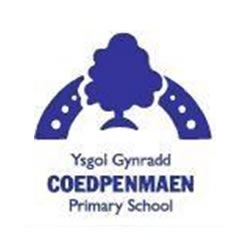
Organisation: Coedpenmaen Primary School
Intervention: Catch Up® Literacy, Catch Up® Numeracy
Submitted by: Mrs Sandra Thomas
Background
Coedpenmaen Primary has approximately 280 pupils, with an extremely large range of learning needs. Whilst the school had an established system of language/literacy support in place, there appeared to be a ‘gap’ in provision for those pupils who could be classed as ‘borderline’ or at risk of not achieving in both Numeracy and Literacy. Catch Up® intervention was initially brought into school through Local Authority supported programmes to address these needs. These interventions were highly effective, with the gains made by pupils impressive. Despite the fact that the LA has now withdrawn support for the programme, at Coedpenmaen we have decided to continue to fund this invaluable provision to our pupils, due to the exceptional nature of the results for a large number of our learners.
Implementation
Catch Up® holds a key role in the school’s provision for pupils who need intervention to build up their basic skills. To enable this to take place, well-trained staff are employed to deliver the interventions. Currently, these staff are supported through the School Effectiveness Grants. With pressures on budgets ever increasing, I aim to ensure that Catch Up® takes priority in discussions with regard to grant spending.
Specific times are allocated to these staff to support pupils on a one-to-one basis. These pupils are identified through a range of methods, which includes analysis of the Welsh Government Tests, Teacher assessment and teacher referral. From the initial assessments, targets for pupil development are identified and the programmes put in place. For a number of pupils, 2 sessions per week are timetabled. Progress is monitored closely, with regular reports being shared with the Headteacher, where rates of progress are measured. Monitoring of the delivery has ensured that these sessions remain high quality, with the pupils gaining valuable skills as a result.
Governors are made aware of the provision through the school’s self-evaluation processes.
Identified staff attended the Management courses, which ensure that provision remains accurate and true to the core purpose of the Catch Up® intervention.
It is intended to continue to use the scheme as part of our exit strategy, to deliver continued support to pupils who have made progress through language support systems (as well as numeracy), but may not yet be ready, or confident enough, to access whole class teaching as a sole route to learning basic skills.
I would fully recommend the use of Catch Up® as an invaluable, successful addition to a school’s provision for more vulnerable learners.
Case Study 1 - Catch Up® Literacy
Child A had a chronological age of 7 years and 6 months when he started Catch Up Literacy in September 2013. He knew 80 high frequency words and, after completing the Salford reading test, his reading age was found to be 5 years and 1 month. This meant that his reading age was 29 months behind his chronological age. He was a reluctant reader and read very slowly and quietly, having to build up quite a few unfamiliar words. When the final testing was finished in June 2014, his chronological age was then 8 years and 3 months and his reading age was 8 years and 6 months, which meant he was 3 months above where he should be. He knew 227 high frequency words and his overall gains were 41 months. He was a different reader altogether; much more fluent, and he didn’t stumble over any words. If he came across an unfamiliar one, he knew what skill to use to help him decode it. He started the intervention reading Catch Up® Literacy level 3 books and, when he finished, he was reading Catch Up® Literacy level 7 books. It was a pleasure to see the change in him.
Case Study 2 - Catch Up® Numeracy
Child B had a chronological age of 8 years and 11 months when she started Catch Up® Numeracy in October 2013. After completing a Basic Number Screening Test, her number age, due to raw score, was found to be age 8; this showed her percentile range to be 26. This showed that Child B was 11 months behind her chronological age. She was very quiet and lacked confidence, and was unable to establish the mathematical language and recognise numbers. She was very withdrawn within class and very reluctant to put her hand up to answer any questions.
During the Catch Up® sessions, you could see that she began having a better understanding and concept of maths, having a one-to-one session twice a week, and we slowly began seeing her confidence grow. After final testing was done in March 2014, her chronological age was then 9 years 4 months and her BNST showed a raw score gain of 9, resulting in her number age increasing to 10.7 (15 months above her actual age). This was a total increase of 31 months in number age since last testing. Child B gained so much confidence and understanding she is now one of the first to put her hand up to demonstrate an answer and still grows in confidence. A true achievement.
Aims
Our Motto is Caring, Learning and Achieving Together, which encapsulates our aims.
It our duty to do our very best to provide the foundations for a successful future for all of our children.
Our education needs to nurture and inspire every child, taking care of their individual needs, so that their imagination is free to flourish.
Schools provide a window to the world – it is our duty to work together to pass on the wisdom of our community, and equip each child with the knowledge, skills and, above all, attitudes which will equip them to become active and responsible members of society.